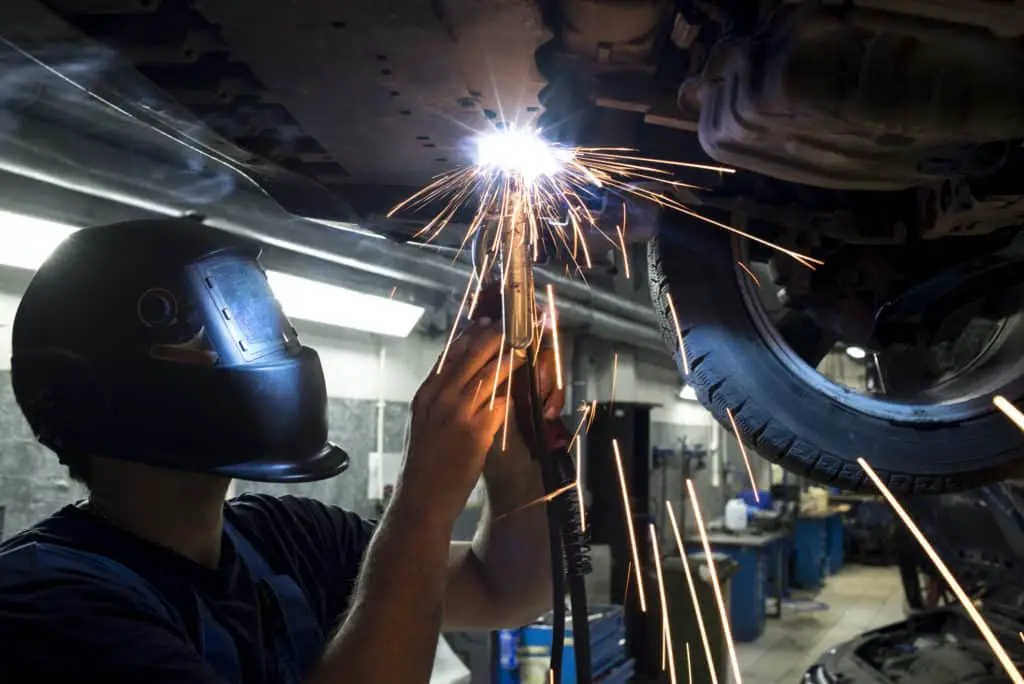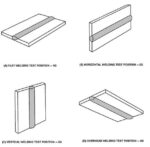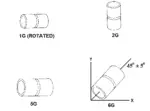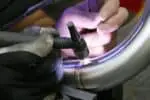The chassis or frame of a vehicle is like its skeleton, hidden from view and providing the strength required for the vehicle to achieve its job, just like a human backbone, and safely transporting you from one point to the other.
When it comes to your vehicle’s chassis, especially if you’re an enthusiastic traveller, you’re certain to run across some chassis damage along the route.
If you find yourself in a scenario where you need to weld the frame, also known as the chassis, of a car, you may be asking if it is permissible to do so alone.
Welding a frame is not prohibited on the federal level. However, the law requires you to adhere to the manufacturer’s requirements and instructions. Laws may differ at the municipal and state levels. In any case, before you begin welding your frame, you should always contact an attorney or legal specialist.
Why would the chassis need repairing?
The chassis is fundamentally the backbone of any vehicle, and its principal job is to support and carry the maximum load safely under all situations.
When handling uneven road surfaces, the chassis is engineered to bend and absorb engine and driveline torque even more.
At some time, your vehicle’s chassis may need to be repaired using welding, which is the structural fusing of metal to repair, change, or enhance the integrity of the chassis.
As long as the relevant rules are followed and a formal inspection is performed following completion, this technique is considered safe and lawful.
Things you will require for welding your chassis.
If you are a beginner welder, you should reconsider or gain some expertise before attempting frame welding. However, if you are determined to perform the task yourself, you will want certain tools to ensure that you are in a good position to execute the job correctly.
You will need the following items to accomplish this:
1.) Welding Clamps- Locking clamps are the finest solution for holding metal parts in place when welding. It just makes your job easier. (Can You Use Exhaust Clamps Instead of Welding?)
2.) Sheet Metal Gauge- Having the ability to gauge the thickness of your sheet metal, especially with MIG welders, helps you to obtain a more exact weld.
3.) Pneumatic Saw- This enables for more accurate cuts, allowing for better lining up of the components and a finer weld.
4.) Aviation Snips- These snips make it easy to cut patches out of sheet metal.
5.) Angle Grinder- Used to remove extra filler from weld areas to maintain them.
6.) Dolly and Hammer Set- Required for shaping sheet metal for bodywork applications.
Here we provide you with some tips that you can follow if you decide to weld a chassis.
However, let me add clearly that I always recommend consulting a professional and ensuring that you are in compliance with your local, state, and federal laws.
1.) Check that the frame is straight and level.
The first thing you need to do is take it to a repair shop where they can check if the frame is straight and level. You can measure this yourself, but if modifications are required, they can be performed by specialists.
When doing an operation such as welding a frame, always seek the assistance of skilled professionals. They have the necessary tools and technology, especially experience, to execute an excellent job.
2.) Clean the frame
Make certain that you clean the whole frame. If it’s too rusted, you may have it scrubbed till it is polished. Finally, ensure there are no rust patches visible. It can also be immersed in a caustic solution to remove undercoating, paint, and grease.
After that, have it verified to ensure that it is level and straight.
3.) Set-up your chassis welding area
Once you’ve levelled and squared up the frame, you’ll want it to stay that way while you work. Mounting it on jack stands is the easiest method to accomplish this. Even saw horses might be used, but jack stands will be more stable.
Once it’s in place, make sure it’s straight. Now that it’s level, hang a plumb bob from each corner. To hang them, you may need to weld a nut or bolt to each corner.
4.) Weld the frame together.
You’ll want to keep an eye on those plumb bobs as you start your welding endeavour. Stop what you’re doing if one or more of those bobs starts to rise or fall.
The chassis is starting to distort as it heats up. You run the danger of permanently destroying the frame if you don’t quit. Simply wait for it to cool. It should take no more than a day.
See also: Best MIG Welder for the Automotive Exhaust Shop (for Beginners)
These are some general guidelines you need to follow while welding the chassis of your vehicle.
1.) A certified or experienced welder must do any structural welding, alterations, fabrications, or repairs.
2.) Before making any changes to your chassis, you will need to get a modification permission.
3.) The proposed repair or welding process must adhere to the manufacturer’s guidelines.
4.) An engineer must check and certify all repairs. The purpose of this guideline is to verify that the safety of the occupants can be fairly ensured and that the integrity of the vehicle has not been jeopardised owing to chassis modification.
5.) You will be needed to pass a roadworthiness test. The vehicle is tested and examined to verify that the modification or repair has not rendered it hazardous to drive.
6.) You will require a modification plate to be inserted.
Things to watch out for-
If the repair and procedures are not carried out effectively and the required criteria are not followed, chassis welding might offer a number of safety concerns.
Some of the issues that can arise out of improper chassis welding are-
Electrical System Damage: If your welding is not done by a professional and the proper measures are not taken, you might cause damage to your vehicle’s electronics such as the in-car entertainment system, car alarm, sensors, and so on.
A competent welder will disconnect the positive connection on your battery system to avoid voltage bursts from damaging your 12v equipment.
Uneven Tyre Wear: It is possible for your tyres to wear down unevenly as a result of faulty weight distribution caused by any bad chassis repairs.
Incorrect Alignment: Your chassis repair may cause your vehicle’s alignment to shift, resulting in crabbing. Poor chassis welding repairs can also lead to stress areas since they are unable to distribute the weight properly.
There is a genuine risk that after your chassis has been restored, it is essentially a structural change, and if not done correctly, you may wind up replacing the chassis entirely.
Make sure to work with a competent professional that understands the methods, legal requirements, and has the necessary tools and knowledge to repair a chassis safely.
Common signs that signify chassis failure
If you have had your chassis repaired, be aware of your vehicle’s capabilities and how it handles. While not all chassis defects are visible, it may be worthwhile to examine the chassis repair.
A deeper check may probably avoid more harm if you recognise any of the concerns listed below:
-
-
- Rapid or uneven tyre wear
- Changes in the way the vehicle rides, bends, handles
- Unusual suspension noise
- Vehicle slides at highway speeds
- Vehicle seems unstable
- Wheels mis-aligned
-
Mistakes That Frequently Lead to Chassis Repairs
1.) Improper welding processes, such as undercutting, no preheat, slag inclusions, transverse welding of flanges, and so on.
2.) A sudden change in section, such as a square end on a reinforcement or body sub-frame.
3.) Avoid drilling holes in chassis rail flanges or too close to other holes to avoid perforation tares.
4.) Overloading of the chassis, such as a vehicle loaded over its specified capacity.
5.) Inadequate reinforcement.
6.) Suspension is too stiff, which means suspension capacity exceeds chassis capacity.
7.) Excessive chassis cuts, even grinding a notch on a flange, can cause a fracture.
Conclusion
Welding is a pretty tough job. And especially if you have to weld your vehicle’s chassis, you know you have to be precise and careful.
Depending on your experience with welding, you can decide if you want to weld the chassis yourself or take it to a professional.
Since we know that welding chassis isn’t illegal, we still have to be aware of all the necessary guidelines which will help keep us out of trouble.








